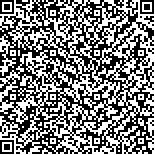杨晨,张俊,孙菲,等.经颅直流电刺激治疗脑卒中后真假性球麻痹吞咽障碍的疗效观察[J].中华物理医学与康复杂志,2020,42(3):199-204
扫码阅读全文

|
| 经颅直流电刺激治疗脑卒中后真假性球麻痹吞咽障碍的疗效观察 |
|
| |
| DOI:DOI:10.3760/cma.j.issn.0254-1424.2020.03.003 |
| 中文关键词: 脑卒中 经颅直流电刺激 康复 吞咽障碍 |
| 英文关键词: Stroke rehabilitation Transcranial direct current stimulation Dysphagia Bulbar palsy Pseudobulbar palsy |
| 基金项目: |
|
| 摘要点击次数: 6773 |
| 全文下载次数: 6978 |
| 中文摘要: |
| 目的 探讨经颅直流电刺激(tDCS)治疗脑卒中后真、假性球麻痹吞咽障碍的临床疗效。 方法 选取符合入选标准的脑卒中后真、假性球麻痹吞咽障碍患者各60例,采取随机数字表法将其分为真性球麻痹治疗组(简称真治组)、真性球麻痹对照组(简称真对组)、假性球麻痹治疗组(简称假治组)、假性球麻痹对照组(简称假对组),每组30例。各组患者均给予基本吞咽康复训练,包括咽部冷刺激与空吞咽动作训练(每日2次)、发音训练(发a、yi、wu音,每次每个音节发音5次)、吸舌器训练(10~20次/组,3组/日)、电动牙刷按摩(一日三餐前各1次,每次15 min)、Vocastim吞咽治疗仪治疗(每次20 min,1次/日,6次/周),共治疗2周;治疗组患者在此基础上采用IS200型智能刺激器(四川省智能电子实业公司)行tDCS治疗(每次20 min,1次/日,6次/周),对照组患者给予假刺激治疗(仅最初30 s内给予tDCS刺激,30 s后停止电流,1次/日,6次/周),共治疗2周。分别于治疗前和治疗2周后(治疗后),采用洼田饮水试验、功能性经口摄食量表(FOIS)及标准吞咽功能评价量表(SSA)对各组患者的吞咽功能进行评定和分析比较。 结果 ①无论是真性球麻痹吞咽障碍或是假性球麻痹吞咽障碍,治疗后,各组患者的洼田饮水试验评级均较组内治疗前明显改善(P<0.01),且治疗组均明显优于对照组(P<0.05);②治疗后,假性球麻痹吞咽障碍2组患者的FOIS评分均较组内治疗前明显改善(P<0.01),且治疗组的FOIS评分显著优于对照组(P<0.01);真性球麻痹吞咽障碍2组患者的FOIS评分较组内治疗前亦有明显改善(P<0.01),但组间差异无统计学意义(P>0.05);③治疗后,假性球麻痹吞咽障碍2组患者的SSA评分均较组内治疗前有明显改善(P<0.01),且治疗组SSA评分明显优于对照组(P<0.05);真性球麻痹吞咽障碍2组患者SSA评分均有下降(P<0.01),但组间差异无统计学意义(P>0.05)。 结论 tDCS联合基本吞咽康复训练有助于真、假性球麻痹吞咽障碍的恢复,尤其对假性球麻痹吞咽障碍患者的疗效更佳。 |
| 英文摘要: |
| Objective To explore the clinical effect of applying transcranial direct current stimulation (tDCS) to stroke survivors with dysphagia caused by bulbar or pseudobulbar palsy. Methods Sixty stroke survivors with dysphagia caused by bulbar or pseudobulbar palsy were randomly divided into an experimental group and a control group, each of 30. All were given basic rehabilitation training, including cold stimulation of the pharynx and empty swallowing training twice a day, practicing the pronunciation of the sounds A, YI and WU five times a day, 30 to 60 repetitions of tongue aspirator training daily and three 15-minute massages with an electric toothbrush. Each subject also received 20 minutes of treatment with a Vocastim swallowing therapy apparatus every day, six times a week for two weeks. Those in the experimental group also received 20 minutes of tDCS every day, six times a week during the two weeks. Before and after the treatment, all were evaluated using the Kubota drinking water test, a functional oral intake scale (FOIS) and standardized swallowing assessment (SSA). Results After the treatment, a significant improvement was observed in the average Kubata test scores, with the improvement of the experimental group significantly greater than that of the control group. The average FOIS score of those with pseudobulbar palsy in both groups also improved significantly, with the experimental group′s average significantly better than that of the control group. The average FOIS scores of those with bulbar palsy had also improved significantly, but there was no significant inter-group difference. The average SSA scores of those with pseudobulbar palsy in both groups improved significantly, with significantly greater improvement in the experimental group. The average scores of those with bulbar palsy decreased significantly, but without significant inter-group differences. Conclusions Transcranial direct current stimulation can usefully supplement basic swallowing training, especially for those with pseudobulbar palsy. |
|
查看全文
查看/发表评论 下载PDF阅读器 |
| 关闭 |
|
|
|